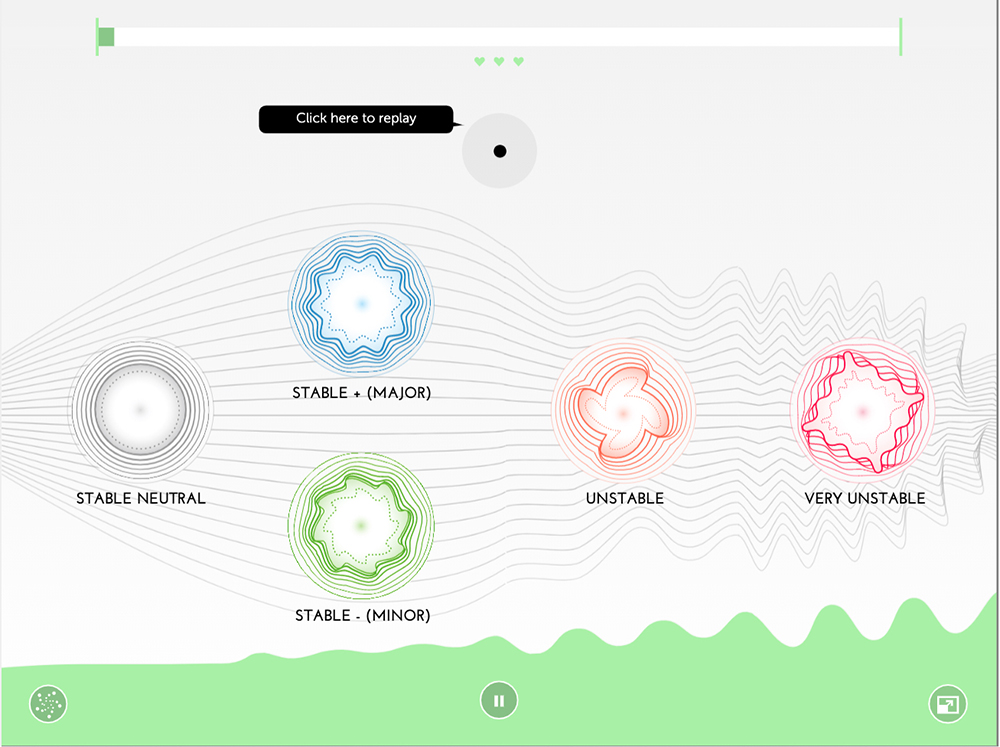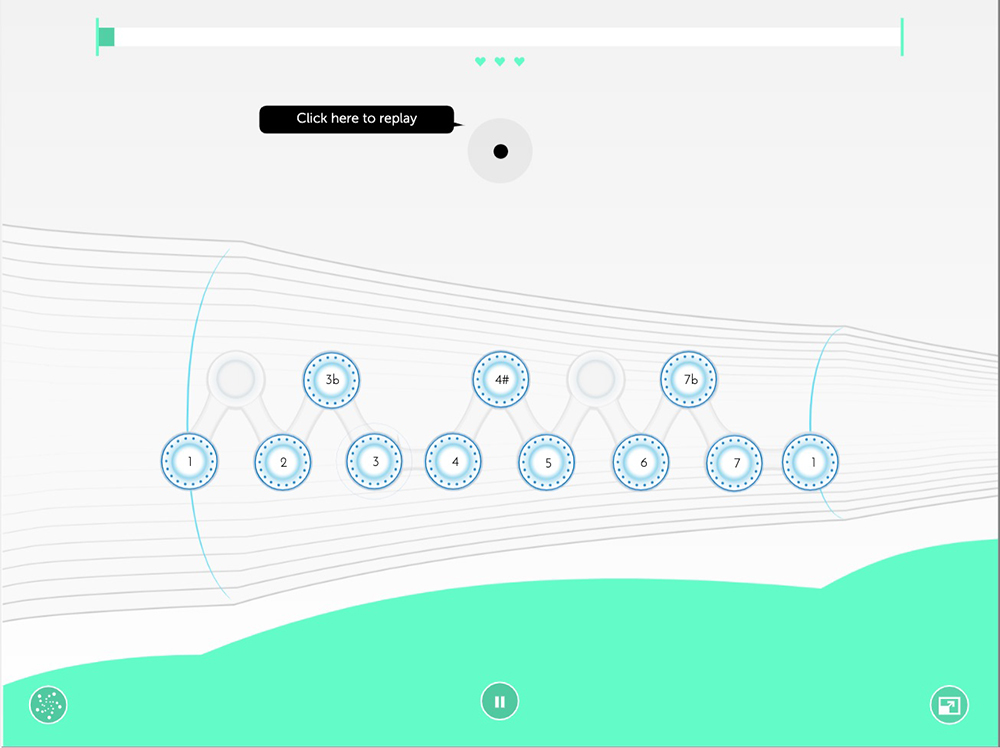Meludia: Innovative Aural Skills and Ear Training Exercises without Staff Notation. Website and iOS app. $5.42 USD per month for students. https://www.meludia.com/
Meludia is a recent web- and mobile-based offering for progressive computer-assisted instruction (CAI) in aural skills and ear training. Unlike other CAI resources (e.g., Auralia), Meludia eschews traditional staff notation, instead employing a unique (and quite beautiful) game-like interface. In so doing, Meludia puts the focus on ear training itself, without the need for scores or (as it advertises) “tedious analysis.” Overall, the Meludia website includes extensive melodic, harmonic, and rhythmic dictation exercises (600 total), which span four levels, called “modules,” ranging from “Discovery” to “Expert.” (Note that, unlike the more fully-featured website, the mobile app is currently devoted exclusively to melodic dictation.)
Perhaps unsurprisingly, the lack of traditional notation has its advantages and disadvantages. As an advantage, for example, Meludia offers activities for many skills that often may not be explicitly practiced in a traditional musicianship class. These include spatialization (i.e., the register of a sound), density (i.e., the number of notes in a chord), and melodic contour. Meludia also emphasizes the “feel” of musical materials over technical labels. Users assess intervals, for instance, on whether they sound neutral, stable, unstable, or very unstable (Figure 1). Unfortunately, Meludia does not connect these more abstract labels with standard theory terminology—“very unstable” intervals include minor seconds and major sevenths but are never identified as such—which seems like a missed opportunity.

Figure 1: Meludia exercise on interval quality
Even though Meludia avoids much traditional taxonomy, it does employ scale-degree notation. Accordingly, a central strength of the platform is that functional hearing can be practiced in isolation from issues of key or rhythm. (All melodic dictation exercises, such as the one shown in Figure 2, are purely strings of scale degrees.) Early stages of these exercises are limited to only a few scale degrees (e.g., 1, 3, and 5), after which more scale degrees are added to complete the diatonic set, followed by successive additions to give the entire chromatic collection. Oddly, the use of functional notation in Meludia does not extend to harmony; instead of Roman numerals, Meludia uses only chord symbols (e.g., C7 to F) for harmonic dictation. Also somewhat unsatisfying, the harmonic dictation exercises on Meludia are limited to only two or three chords total.

Figure 2: Melodic dictation exercise in Meludia
For use in a course, Meludia offers an “Educator Dashboard” that allows instructors to group students by section and track their progress. The selection and ordering of exercises in Meludia is fixed, however, so instructors can track only general progress through the website as a percentage of exercises completed to mastery level (i.e., three “stars”). Also, it is worth noting that a good portion of my first-semester students found the “Discovery” and “Intermediate” exercises relatively easy, whereas the “Advanced” and “Expert” exercises were challenging even for me. Consequently, I would recommend Meludia as it stands either for an introductory musicianship class (perhaps especially one for non-majors) using the first two modules; or conversely, for a capstone musicianship class using the last two modules to stretch students beyond the typical aural skills activities and to push the boundaries of their scale-degree hearing.
